|
Summertime brings with it beach and pool time, picnics, vacations, and lazing in the hammock. Unfortunately, heat waves and unbearable humidity can also accompany the summer months. One often hears the phrase “dog days of summer.” The origin of this phrase is related to the stars, not dogs wilting in the summer heat! Sirius is the brightest star in the night sky and part of the constellation Canis Majoris—the “Greater Dog.” The ancient Romans and Greeks believed that when the Dog Star, Sirius, appeared in the sky and occupied the same region as the sun, it created the hottest days of the year. They also believed it brought bad luck, drought, and chaos. The Romans called it “dies caniculares” or “days of the dog star.” For the ancient Romans, the dog days of summer were believed to occur from approximately July 24 to around August 24. Over time, the constellations have drifted, and the “dog days” dates have changed. According to the Old Farmer’s Almanac, the Dog Days are considered to be between July 3 and August 11 in the Northern Hemisphere. However, it seems that these days, heat and humidity may linger for a bit longer, regardless of Sirius’s position in the sky. Although one might tend to prefer white or rosé wines as the temps begin to climb, red wines should not be overlooked during the summer months. Many light-bodied to full-bodied reds are ideal for sipping outdoors while enjoying grilled fare. For instance, unoaked or lightly oaked red wines tend to be lighter and fruitier. Slightly chilling many red wines for no more than 30 minutes can enhance the flavors, minimize the focus on alcohol, and make the wine more refreshing. When choosing a wine to drink while outside on a hot day, I recommend staying below 14% ABV. (alcohol by volume) Alcohol is a diuretic that contributes to dehydration. And when combined with outside heat, which leads to sweating, one can become dehydrated quickly. Therefore, it is essential to drink water and stay hydrated! Here are two white and two red Italian wines to enjoy this summer or any time of the year. The Whites Bolla Soave Classico DOC 2023 Founded in 1883, Bolla winery is situated in the countryside of Valpolicella and produces classic Venetian wines. This wine is 85% Garganega and 15% Trebbiano di Soave. Grapes are sourced and handpicked from 15-to 25-year-old vines in the Soave Classico hills, where the soil is of volcanic origin. After fermentation in stainless steel vats, the wine is left on the fine lees at a low temperature until it is ready for blending. Nose: White blossoms, apple, tropical fruit and citrus. Palate: A dry white wine with lots of character. Silky texture with pineapple, melon, honeysuckle, and lemon curd. Light and refreshing! Alcohol: 13% SRP: $9.99 Pairing suggestions: Enjoy as an aperitif or with seafood, light pasta, risotto, or salads. La Scolca Gavi Dei Gavi Gold Edition DOCG 2021 La Scolca is located in the prestigious terroir of Rovereto di Gavi in the Piedmont region. They have been producing wine for over 105 years and are in their fifth generation, where tradition is combined with modernity. 100% Cortese grapes are sourced from the Gavi hills in vineyards with vines up to 60 years of age. Fermentation takes place in stainless steel tanks and rests on the lees until bottling. Nose: White flowers, green apple, almonds, citrus and minerality. Palate: A dry, crisp wine with fresh acidity and balanced notes of flint, almonds, honeydew, and white fruit. A hint of citrus teases the palate on the finish. Alcohol: 12% SRP: $16 Pairing suggestions: Perfect as an aperitif or served with appetizers, fish, seafood, white meat, risotto, or Asian cuisine. The Reds Sensi Sabbiato Bolgheri Rosso DOC 2022 Sensi’s family history started in Chianti in 1890 and then expanded to other areas in Tuscany. Currently, the winery is managed by the fourth generation, which produced its first Bolgheri DOC wine in 2007. The grapes for this wine are a blend of 60% Cabernet Sauvignon and 40% Merlot, sourced from Bolgheri and Livorno in sandy, mineral-rich soils near the Tyrrhenian coast in Tuscany. After fermentation, the wine aged for 12-14 months in French oak barriques, approximately 50% of which were new wood. Further aging took place in bottles. Nose: Dark berries, baking spice, croissants, a touch of herbs and earthy. Palate: Aromas segued onto the palate with notes of plum, dark cherry, and pomegranate, balanced with acidity and salinity. Dark fruit lingers on a long finish. Alcohol: 14% I’ve included this wine despite its 14% alcohol volume. It is a great addition to enjoy with barbecue fare. But save it for a cool summer day or evening, not a heat wave! SRP: $18 Pairing suggestions: Enjoy with your favorite grilled meat, seafood, white meat, or pasta and sauce. Tenuta Regaleali Lamùri Nero D’Avola Sicilia DOC 2020 Tasca Conti D’Almerita boasts over 200 years of winemaking history in Sicily, dating back to 1830. It remains family-owned and run by the Tasca family. They have five estates throughout Sicily, with Tenuta Regaleali considered the “mother estate” comprising 550 hectares in the highlands of central Sicily. In the Sicilian dialect, Lamùri means ‘love’ and represents the Tasca’s love for their native Nero d’Avola grape variety, estate-grown at some of the highest points in Sicily. This wine is 100% Nero d’Avola. After fermentation, the wine was aged for 12 months in 20% new and 80% 2nd and 3rd-year French oak barrels. Nose: Floral, dark cherry, berries, baking spice, herbs, and a hint of flint. Palate: Aromas spill onto the palate with soft tannins, berries infused with balsamic, and a savory finish of spice and acidity. Alcohol: 13% SRP: $19.99 Pairing suggestions: Grilled meat, chicken, game, seared tuna, pasta and red sauce, or pizza, Please remember that alcohol, in combination with high temperatures, can dehydrate us quickly, so be smart. Drinking plenty of water is essential when outdoors in sweltering heat, especially if you plan to consume alcohol! Until next time…
Cheers! Penina To leave a comment or if you have an inquiry, please contact me at [email protected] The historic San Felice Wine Estate is located in the heart of Chianti Classico in the commune of Castelnuovo Berardenga in Tuscany, Italy. The estate covers an area of more than 650 hectares. There are 150 hectares of wine vineyards, 80% of which is devoted to Sangiovese, the heart of their production. Their presence extends to the prestigious terroirs of Montalcino and Bolgheri as well. San Felice has approximately 17,000 olive trees, experimental plantations, and a hotel complex. Known for its innovation and research to rejuvenate and preserve nearly extinct ancient Tuscan grape varieties, San Felice has launched its new Vitiarium Collection. Vitiarium is a botanical Latin word, when translated to English, means “a nursery for vines - a work in progress." To quote San Felice, “This new line marks the beginning of a fresh chapter in a legacy that continues to evolve, accelerating the trajectory of this true icon of Tuscan wine. This journey now takes on a new identity: Vitiarium, a name that speaks to deep roots—those reaching back to the early 1980s, when ancient native grape varieties, nearly lost to time, were rediscovered and revived. The idea of preserving a forgotten heritage gave rise to an experimental vineyard dedicated to safeguarding Tuscan viticultural biodiversity, from which this new line draws its name. The collection includes Borgo Chianti Classico DOCG, Pugnitello Toscana IGT, In Avane Toscana IGT (a white wine), and La Pieve Chianti Classico DOCG Gran Selezione—each an authentic expression of a land where tradition and innovation meet.” Over the past several years, I have tasted and reviewed a selection of San Felice wines from their three Tuscan estates. They are all noteworthy wines, as are the following four new labels from the Vitiarium Collection. In Avane Chardonnay Toscana IGT 2023 The name “In Avane” comes from “Avenal,” the Etruscan name of the area, which encloses a trace of the ancient culture present in the territory of San Felice. The grapes for this Chardonnay are hand-harvested from the San Felice vineyard and fermented mostly in stainless steel and partly in oak barrels. It is then bottle-aged for a few months. Nose: Beautiful floral and citrus aromas with a slight hint of vanilla. Palate: White peaches, fresh acidity, and a surprisingly long finish with citrus and melon teasing the palate. Alcohol: 12.5% SRP: $33 Pairing suggestions: Enjoy as an aperitif or serve with appetizers, salads, seafood, and grilled chicken. Borgo Chianti Classico DOCG 2022 San Felice said, “Chianti Classico with a character that embodies the soul of San Felice. Sangiovese and Pugnitello come together to create a fragrant and vibrant wine, a faithful and authentic representation of our distinctive terroir.” The blend is primarily Sangiovese with a bit of Pugnitello. Grapes were vinified separately in stainless steel for two weeks and then aged for about 12 months in large Slavonian oak barrels before bottling. Nose: Floral notes, fresh dark fruit, berries, baking spice, and a touch of earth. Palate: Aromas spill onto the palate with cherry and forest floor. Spice and earth linger on the finish. Balanced, smooth and juicy! Alcohol: 13.5% SRP: $33 Pairing suggestions: Grilled meat, seared tuna, mushroom risotto, pizza, or hearty soups and stews. La Pieve Chianti Classico Gran Selezione DOCG 2021 From San Felice, “La Pieve Gran Selezione expresses the essence of San Felice's Chianti Classico. The Sangiovese, harvested from the finest company vineyards and vinified with care, produces a wine that represents the highest expression of the terroir. This is in line with San Felice's production philosophy, which has always sought to interpret the land through native grape varieties.” The predominant grape for this wine is Sangiovese, along with other native grapes. Fermentation occurs in steel tanks for 22 days, then malolactic fermentation and aging in wood for 24 months. It is bottle-aged for eight months before release. Nose: Floral notes of violet, dense red fruit, dark cherry, baking spice, anise, and cherry tobacco. Palate: Well-structured and silky smooth with aromas segueing onto the palate with dark cherry, vanilla, and hints of licorice lingering on a long finish. Alcohol: 14% SRP: $50 Pairing suggestions: Enjoy with a charcuterie board, roasted meats, stews, game, and Pappardelle al Cinghiale. Pugnitello Toscana IGT 2021 From San Felice, “Pugnitello is an ancient Tuscan native grape variety, whose name (little fist) refers to the shape of its cluster. Following its rediscovery, it has been researched in collaboration with the universities of Florence and Pisa in San Felice’s experimental vineyard. This wine is the fruit of 20 years of study and experimentation focused on saving native Tuscan grapes from extinction. Pugnitello is noteworthy for its distinctive characteristics, smoothness, and full-bodied concentration.” This 100% Pugnitello was fermented on the skins for 20 to 25 days, followed by malolactic fermentation, and then aged for 18 to 20 months in French oak barriques, followed by eight months of bottle aging. Nose: Jammy-rich fruit and lots of baking spice, especially cinnamon and clove. Earthy with deeper notes of dark berries and plum.
Palate: Beautifully rich, fruity, and smooth, with a sweet and savory dance. Perfectly balanced and well-structured. Hints of cherry, plum, cocoa, cedar, and smokey notes do a sexy tango on the palate. Run, don’t walk to scoop this one up. Alcohol: 13.5% SRP: $69 Pairing suggestions: Roasted and seared meats, hearty stews, game, fowl, and mushroom risotto. With Memorial Day weekend in full swing, these wines will pair with beach sunsets, BBQs, outdoor and indoor dinners, or relaxing with a good book or movie. And, of course, they are perfect to sip all year long! Until next time, Cheers! Penina To leave a comment or if you have an inquiry, please contact me at [email protected] Spring is in full swing, with flowers blooming against a background of vibrant green foliage bursting from trees. Birds are nesting, and butterflies are reaping the benefits of sweet floral nectar. It is the season of renewal and the promise of new beginnings. With warmer weather upon us, I believe we are all ready to embrace the outdoors. I certainly am! As most of my readers know, what type of wine I drink is not dictated by the weather, but what my palate is in the mood for. Billy Joel’s lyrics from the song “Scenes From An Italian Restaurant” ring true for me. “A bottle of white, a bottle of red Perhaps a bottle of rose instead” “A bottle of red, a bottle of white It all depends upon your appetite” So, with that in mind, here is a sampling of four wines I received, which will please your palate and pair well with spring, and all year round! Domaine Bousquet Reserve Organic Chardonnay 2023 Domaine Bousquet is no stranger to my website. I have reviewed and thoroughly enjoyed all of their wines throughout the years. This family-owned estate is in the Gualtallary Valley, high up in the Tupungato district of the Uco Valley in Argentina’s Mendoza region. This 100% Chardonnay comes from certified organic estate fruit and is hand-harvested from low-yield vineyards located at the foot of the Andes at an elevation of 4000 plus feet. 50% of the wine is fermented in oak for 15 days, and the other 50% in tanks. The wine is aged for six months in 3rd use French oak barrels on the lees for a Burgundian style. Nose: Lovely floral and tropical notes, with apples, lime, freshly baked bread, and a hint of vanilla. Palate: Creamy mouth-feel with beautiful acidity, oak aromas transcend on the palate with pear and tropical notes of pineapple and pink grapefruit. Oak and acidity persist on a long and delicious finish. Alcohol: 13.5% SRP: $18 Pairing suggestions: Enjoy as an aperitif or with seafood, salads, cream-based pasta, mushroom risotto, or cheese. Herzog Lineage Pinot Noir Clarksburg 2023 Herzog Wine Cellars has a long family history of winemaking that spans nine generations. From Europe to New York to the vineyards of California, the Herzog family gave rise to the American kosher wine industry, including premium kosher winemaking in California. Today they have eight brands of wine, one of which is the Lineage brand. This 100% Pinot Noir is harvested from vineyards in Clarksburg, CA. Try as I might, I could not find any technical data or the aging process of this wine. Nose: Cherries, pomegranate, cocoa, and baking spice. Palate: Silky mouth-feel with cherries, strawberry, earthy, and a hint of baking spice lingering on the finish. Alcohol: 13% SRP: $20 Pairing suggestions: Roasted leg of lamb, duck with cherry glaze, grilled portobello burgers, or seared tuna. Attems Pinot Grigio Ramato Friuli DOC This wine is produced by Attems, a historic estate located in Friuli, in northeast Italy. In 2000, the estate was sold to the Marchese Vittorio Frescobaldi. Pinot Grigio, aka Pinot Gris, is a white wine grape that thrives in a cool climate. The vineyards for this grape are situated in the middle area of the property, known as “manine” or “little hands” which is a primarily flat area set between Collio and Isonzo. This 100% Pinot Grigio gets its coppery/coral color from slight contact of about ten hours with the purple skins before pressing and fermenting. Following fermentation, the wine rested for four months on noble lees. Nose: White fruit, melon, cherry, citrus, and wildflowers. Palate: Crisp fruit with nice acidity, pink grapefruit, melon, cherry pie, and minerality lingering on the finish. I love the dance between tart and juicy. Alcohol: 12.5% SRP: $20 Pairing suggestions: Seafood, goat cheese wrapped in prosciutto, cream-based pasta, grilled veggies, or enjoy as an aperitif. Darom by Yatir Cabernet Sauvignon 2023 Yatir Winery, founded in 2000, is located at the southern tip of the Judean Hills, and built at the foot of the Israelite Tel Arad Fort (an archeological site) in the heart of the Negev desert. The vineyards of the Yatir Forest are just 10 minutes away. Vineyards are planted at an altitude of up to 900 meters above sea level and are dispersed throughout different locations in the forest, each with its own distinct feature. The dry desert climate and cool nights contribute to producing exceptional wine grapes. The grape blend for this wine is 85% Cabernet Sauvignon, 10% Petit Syrah, and 5% Shiraz. Grapes are hand-harvested; the wine is aged for eight months in small oak barrels. Nose: Dark fruit, cherry, baking spice, forest floor, and a hint of violet.
Palate: Rich and fruit-forward with lots of berries, cherry, spice, earthy, and slate. Alcohol: 13% SRP: $35 Pairing suggestions: Prime ribs, Mediterranean cuisine, risotto, and chocolate desserts. Whatever the season, occasion, or “just because” moment, these wines are price-approachable, and your palate will thank you! “A bottle of red, and a bottle of white Whatever kind of mood you're in tonight” Billy Joel Until next time… Cheers! Penina To leave a comment or if you have an inquiry, please contact me at [email protected] With over 20 grape varieties grown in Chile, the Carménère grape has become Chile’s “signature” grape. Carménère is a member of the Cabernet family and was originally planted in the Medoc region of Bordeaux, France. It is considered part of the original six grapes of Bordeaux. The name Carménère is derived from the French word crimson. It was thought to be extinct after the European phylloxera outbreaks in the 19th century. However, the grape was rediscovered in Chile in the 1990s. Chile now has the largest area of planted Carménère in the world. Today, Carménère grows chiefly in the Colchagua Valley, Rapel Valley, and Maipo Province of Chile and produces the majority of Carménère wines. Carménère is known for its deep red color with fruit-driven blackberry, cherry and spice flavors. Here is a sampling of six noteworthy wines. In Situ Reserva Carménère 2021 José Vincente founded In Situ Family Vineyards in 1974. After growing grapes for 20 years, he and his son Horacio decided to build a winery and produce high-quality wines in the Aconcagua Valley. The winery is located in San Esteban, Region V, Chile. The Upper Aconcagua terroirs are well-suited to wine growing with a unique combination of soil, light, and water. This wine is 95% Carménère and 5% Cabernet Sauvignon, handpicked from two vineyards. One is located on the slopes of Paidahuen hill (3,000 feet above sea level); the other vineyard is on the riverbanks of the Aconcagua River. The wine is aged in 50% French and 50% American 225-litre oak barrels for 12 months. After bottling, this wine was aged for at least three additional months before release. Nose: Dark fruit, spice, herbal notes, and a hint of cedar. Palate: Dark cherry, dark berries, baking spice, anise, a hint of cocoa, and acidity blended into the mix. Alcohol: 13% SRP: $13 Pairing suggestions: In Situ suggests honey-roasted lamb or pork in mustard sauce. Try seared tuna in peppercorn sauce as well. InVINA Luma Chequen Gran Reserva Carménère 2020 InVina is a family-owned winery that the Huber family founded in 2007. With over 20 years of experience in Chilean viticulture and wine, they are focused on investing in and developing vineyards in the Maule Valley. They are also focused on producing quality grapes and wine. This 100% Carménère is handpicked from the best lots of InVina’s estate vineyards in the Maule Valley appellation. The wine is aged in oak barrels for 12 months and bottled with minimum filtration. Nose: Ripe, lush berries, cherry, herbs, forest floor, and a hint of bell pepper. Palate: Dark cherry, blueberry, baking spice, chocolate, and pepper. It is a smooth and fresh wine with a hint of sapidity on the finish. Alcohol: 13.9% SRP: $17 Pairing suggestions: Enjoy with aged cheese, game, beef stew, spicy cuisine, or vegetable risotto. Morandé Vitis Única Carménère 2021 Viña Morandé was founded by Pablo Morandé in 1996. He was the first person to plant vines in the Casablanca Valley, and also has vineyards in Maule Valley and Maipo Valley. The company is dedicated to implementing sustainable practices to benefit the environment in their decision-making processes. Their eye is on traditional with an innovative spirit in the vineyards and winery. The grapes for this 100% Carménère are handpicked from the San Bernardo estate, located in the Maipo Valley. The vines are planted in a bed of pure gravel. This wine is aged for about 16 months in 80% French oak foudres and 20% in new French oak barrels. Nose: Hints of violet with cherry, dark berries, baking spice, pepper, and espresso beans. Palate: Aromas segue onto the palate with persistent and vibrant fruit, earthy forest floor, and smooth tannins. The finish is long, with chocolate, spice, and cherry lingering. Alcohol: 13.5% SRP: $20 Pairing suggestions: Viña Morandé suggests stews, white meat, creamy pasta, young cheese, and dark chocolate. Primus Carménère D.O Apalta 2020 Primus Winery was founded over 20 years ago by Agustin Hunneus. The estate is located in Apalta, a sub-region of Colchagua Valley. This exclusive appellation gained Denomination of Origin (D.O.) status in 2018. Only seven wineries have the privilege of owning vineyards here. Primus is Latin for “the first” or “the first among its peers.” Primus is the pioneering regenerative organic and biodynamic winery of Apalta, with vines dating back to 1889. The grapes for this 100% Carménère were harvested from the highest part of their organic vineyard and in the lower part of the property as well. The wine was aged 12 months in French oak barrels, 18% new barrels. Nose: A hint of floral with cherry, blueberry, spice, herbs, and cocoa. Palate: Vibrant and fruity with dark cherry, berries, baking spice, and silky tannins. A touch of pepper and minerality linger on a long finish. Alcohol: 14.5% SRP: $21 Pairing suggestions: Primus suggests beef empanadas, lamb curry, and stews. TerraNoble CA2 Costa 2020 TerraNoble, founded in 1993, is in the Maule Valley of Chile. TerraNoble initially presented itself as a boutique winery specializing in Merlot. However, in 1994, Chilean Merlot was identified as Carménère, so TerraNoble committed to this rediscovered variety. Since then, they have extended viticultural experimentation and innovative winemaking practices to the Colchagua and Casablanca valleys. The grapes for this 100% Carménère are handpicked from their vineyard plots in the Colchagua Valley ’Costa’, Lolol vineyard, 40 kilometers from the ocean. 58% of the wine was aged in untoasted foudres, and 42% in new and previously used 300-lt French oak barrels for 16 months. It was then further aged for nine months in bottle. Nose: Lush red fruit, spice, earth, dark coffee beans, and herbs. Palate: Dark berries, herbs, and spice blend with silky tannins that are nicely balanced with acidity. The finish is long, with dark chocolate, espresso, and a hint of herbs and minerality lingering. Alcohol: 14.5% SRP: $36 Pairing suggestions: TerraNoble suggests thick ribs, oven-roasted beef brisket, risotto, or seasoned foods. Montes Wings Carménère 2020 Montes Winery is based in the Colchagua Valley, Chile, with its vineyards spread throughout the country. It was established in 1987 by original partners Aurelio Montes and Douglas Murray. In 1988, Alfredo Vidaurre and Pedro Grand joined the partnership. These visionaries created a company recognized worldwide today, with their wines exported to over a hundred countries. Wings was created from a long-running dispute between Aurelio Monte Sr. and his son, Aurelio Jr. His son wanted to produce a “more free-flowing style of Carménère.” The result is Wings. It is 85% Carménère and 15% Cabernet Franc. Grapes for this wine are sourced and hand-picked from their Finca de Apalta estate in the Colchagua Valley. The wine was aged in new French oak barrels (80%) and second- and third-use barrels (20%) for 16 months before bottling. Nose: Dark berries, cherry, pepper, baking spice, tobacco, and a hint of fig. Palate: Lush dark fruit with spice and a touch of dark chocolate lingering on a long finish. Beautifully structured and complex. It will only get better with age! Alcohol: 14.5% SRP: $55 Pairing suggestions: Aged cheese platter, roasted/grilled meat, mushroom stew, lamb chops, or vegetable risotto. Happy sipping! Until next time…
Cheers! Penina To leave a comment or if you have an inquiry, please contact me at [email protected] Whether you are searching for a holiday gift or a tasty sip to pair with a meal, I recommend the following five wines from Argentina, Italy, Oregon, Washington, and Virginia to add to your shopping list! Unánime Signature Malbec 2018 Mascota Vineyards is located in La Consulta, San Carlos, a small wine-growing sub-region in the southern Uco Valley of Mendoza, Argentina. Winemaker Rodolfo Sadler founded Mascota and has crafted wines for over 30 years. This 100% Malbec is aged for 14 months in French oak barrels. Nose: Violets, fresh red fruit, and baking spice. Palate: Bing cherries, red plum, with a hint of dark berries and subtle notes of dark chocolate, espresso, and pepper on a lengthy finish. Smooth and balanced with complex layers. Alcohol: 14.5% SRP: $40 Pairing suggestions: Hearty stews, roasted meat, fowl, or mushroom risotto. Intrinsic Red Blend 2021 Intrinsic Wine Co is a Washington state wine brand created by Juan Muñoz Oca, head winemaker at Columbia Crest, and his team. Columbia Crest and Intrinsic are both owned by the largest wine company in Washington, Chateau Ste. Michelle Wine Estates. According to available information, the Intrinsic Red Blend 2021 is a blend of Malbec, Cabernet Franc, and Cabernet Sauvignon, originating from the Columbia Valley region of Washington state. Nose: Lovely notes of raspberry, dark cherry, and sweet plums, along with hints of violet, tobacco, and herbs. Palate: This rich and juicy blend shows off notes of chocolate, espresso beans, and pepper that blend well with ripe fruit. Silky tannins and well-balanced acidity lead to a long finish with spice and berries lingering on the palate. Alcohol: 14.5% SRP: $20 Pairing suggestions: Sip on its own or head to the dessert table with your glass! FIOL Prosecco DOC Extra Dry FIOL (pronounced FEE-yol) means “son” in Venetian dialect and “chap” in English. FIOL was founded in 2011 by Gian Luca Passi and co-founder Giovanni Ciani Bassetti. They are childhood friends who grew up surrounded by Prosecco. “Most local winemakers have been drinking sparkling wine for 50 years and need an extraordinarily strong bubble to really feel it. We wanted something gentler, more subtle, more fruity.” says Gian Luca Passi.” This sparkling wine is 100% Glera. Prosecco DOC requires a minimum 30-day secondary fermentation in tank. This wine remains in tank 40 days for extra depth and complexity. Nose: Green apples, a touch of white flowers, and citrus. Palate: Smooth bubbles with emphasis on the grape. It is crisp and refreshing with notes of apple, pear, minerality, and a touch of lemon zest. Alcohol: 11% SRP: $19 Pairing suggestions: Enjoy as an aperitif, in cocktails, or with appetizers, entrees, and dessert! Appassionata Andante Pinot Noir 2017 J. Christopher Winery, located in northern Willamette Valley, Oregon, is owned by iconic winemaker Erni Loosen, creator and owner of Germany’s Dr. Loosen and Villa Wolf estates. Following his passion for Pinot Noir, Erni set his sights on J. Christopher, eventually purchasing 40 acres and planting the Appassionata Vineyard. The grapes for this 100% Pinot Noir are sourced from 33-year-old vines in the Dundee Hills appellation. The wine was aged for 20 months in French oak barriques (25% new). The wine is released five years after vintage. Andante means ‘gently, unhurried.’ Nose: Exotic flowers, brioche, red berries, red plums, baking spice, herbal notes, and a whiff of orange. Palate: This is a lively wine that balances delicate and savory. Silky texture with bright cherry, pomegranate, baking spice, and orange zest. A long and tasty finish awaits. Alcohol: 13.5% SRP: $135 Pairing suggestions: Roasted fatty fish such as salmon, stuffed artichokes, duck, grilled meat, venison, and most cheese. Early Mountain Rise 2021 Early Mountain Vineyards is owned by Jean Case, who started the company in 2012. They are located in the foothills of the Blue Ridge Mountains in Madison, Virginia, with more than 55 acres of planted vineyards. Rise is reserved for only the finest vintages with specific selections from exceptional mountainside vineyards. It is a beautiful blend of 58% Merlot, 17% Petit Verdot, 15% Tannat, and 10% Cabernet Franc. The wine is aged for 20 months in French oak barrels (52% new) and 18 months in bottle prior to release. If properly stored, this wine will drink well from 2024-2050. Nose: Floral, dark berries, plum, cedar, baking spice, and forest floor.
Palate: A perfect dance of structured tannins merging with acidity leads to an elegant wine. Aromas segue onto the palate with lingering notes of chocolate, spice, and decadent berry pastries on a long finish. Alcohol: 14.8% SRP: $150 Pairing suggestions: Hearty stews and soups, roasted red and white meat, mushroom risotto, pasta, seared tuna, charcuterie board, and spinach quiche. I hope these wines have aroused your curiosity. Your palate will appreciate it! Happy tasting! Until next time… Cheers! Penina To leave a comment or if you have an inquiry, please contact me at [email protected] The Loire Valley wine region is the third-largest winemaking region in France, spanning over 170 picturesque miles. The vineyards are situated along the middle stretch of the Loire River (France’s longest river) in central France, which runs from east to west. Diversity in soil composition and climate along this stretch plays a vital role in the production and characteristics of the wine. There are over 4000 wineries and approximately 57,400 hectares of vineyards here. Loire Valley is also called the “Garden of France”. It is noted for its vineyards, floral gardens, fairytale castles, and historic towns. The Loire Valley is divided into five sub-regions, each with its characteristic grapes, appellations, and styles. There are 51 appellations of origin (AOP) and six protected geographical indications (IGP). Most of the wines produced here are pressed from a single varietal as opposed to most classic French wines that are blended. There are over 24 grape varieties in the Loire Valley, with the vast majority of production being white wine. The leading white varietals are Melon De Bourgogne, Chenin Blanc, and Sauvignon Blanc. The leading red varietals are Pinot Noir, Cabernet Franc, and Gamay. According to the Loire Wine Council (InterLoire), Loire Wines’ industry-leading efforts are being made toward environmental protection and sustainability. To quote: “2030 INDUSTRY PLAN: The Loire Wine Council, InterLoire, was the first to create a collective plan involving all wine industry players: the 2030 Industry Plan, outlining the future for the wine region, with a target of 100% of Loire Wines farms certified sustainable or organic by 2030. Today, 73% of wineries and 85% of surface areas are certified either organic or sustainable by High Environmental Value (HEV) or TerraVitis. AGROCLIMATIC ATLAS: Further, InterLoire worked with research and science teams to develop the Agroclimatic Atlas, an unprecedented educational tool designed to raise awareness of how climate change will impact the Loire region. The Agroclimatic Atlas shows projected changes in climatic and agroclimatic indicators specific to the emblematic grape varieties of the Loire region up to the year 2100. This tool highlights the vulnerability of vines to climate change and provides an opportunity for professionals to prepare for tomorrow’s climate while also encouraging action today.” Here is a selection of three Loire wines made by winemakers advocating sustainability. (samples) Domaine Vincent Carême Vouvray Le Clos AOC 2021 This winery is situated in the heart of Vouvray appellation, in the Touraine sub-region, and spans 37 acres. The estate, established in 1999, is owned by Vincent Carême and his wife, Tania. All of Domaine Vincent Carême’s wines have been certified organic since 2010. This wine is 100% Chenin Blanc. Grapes are sourced from 50-year-old vines grown in limestone, flint, and clay soil. The grapes are hand-harvested, and the wine is aged in oak barrels for 12 months. Nose: Bursting with notes of white flowers, honey, white stone fruit, and a touch of citrus. Palate: Apple, pear, racy acidity, notes of minerality, and honeysuckle. It is a bright and balanced wine with a hint of lemon zest on the finish. Alcohol: 13% SRP: $38 Pairing suggestions: Enjoy as an aperitif or with savory cheese, fish, and white meat. Domaines Landron la Louvetrie Muscadet Sevre-et-Maine Sur Lie AOP 2022 Domaines Landron is in La Haye Fouassière, in the Muscadet Sèvre et Maine appellation in the Pays Nantes sub-region in Loire Valley. Joseph Landron worked with his father for 12 years before continuing to work the estate on his own. All grapes are organically grown, and the wines are certified as both organic and biodynamic by Ecocert. This wine is 100% Melon De Bourgogne (Melon Blanc). Grapes are hand-harvested from blocks of 30 to 40-year-old vines and young vines under ten years. The soils in his vineyards range from clay, sandstone, and silica to gneiss and the unique metamorphic amphibolite.. This wine is aged on fine lees for six months in glass-tiled concrete vats without fining. Nose: White flowers, citrus, pear, apple, and minerality. Palate: This is a dry, savory, mineral-driven wine with crisp acidity. Notes of salinity mingle with green apple and pear. Refreshing! Alcohol: 12% SRP: $16 Pairing suggestions: Perfect for shellfish and oysters or any seafood. Roasted white meat, goat cheese, and sushi also pair well with this wine. Château de Plaisance Anjou ‘Sur la Butte’ 2021 Château de Plaisance is situated in the Anjou sub-region of the Loire Valley. Since 1995, their 25 hectares of vines have been certified organic, and in 2008, they transitioned to certified biodynamic practices. Vanessa Cherruau now owns the estate and continues the legacy that the Rochais family began. Her first vintage was 2019. The grapes for this wine are 70% Cabernet Sauvignon and 30% Cabernet Franc. Grapes are sourced from 35 year-old-vines located on Chaume hill with soil of schist, phtanite, and spilite. The wine is fermented and aged in concrete vats for 11 months. Nose: Vibrant aromas of red berries, violet, and sweet herbs.
Palate: Notes of dark berries, lively acidity, smooth tannins, herbs, and a pinch of minerality are a delight to sip. Alcohol: 13% SRP: $33 Pairing suggestions: Grilled tuna, roasts, hearty soups, and pizza. These wines will surely please your palate! Until next time… Cheers! Penina To leave a comment or if you have an inquiry, please contact me at [email protected] Halloween has come and gone, which for many, now signals the onset of holiday decorating, organizing festivities, and planning menus. Over this past week, I have begun receiving requests asking questions such as “What is a light red wine?” and “What goes best with a particular meal and/or dessert?” So, in keeping with the holiday “spirit,” I am re-posting an article I published two years ago that will hopefully guide you through this holiday season and beyond! What once seemed a simple task of putting together a traditional holiday menu has become more challenging these days, with dietary restrictions and food lifestyle choices to consider. Food allergies, vegetarian, vegan, gluten-free, and lactose-free diets must be taken into account, and juggling all these food requirements can quickly turn a holiday table into a smorgasbord. And adding wine pairings to accommodate all of this can be pretty daunting! So, here are a few wine varietals to consider that will pair well with a myriad of dishes and alleviate the pressure of buying every style of wine in the store! White Wines Look for white wines with higher acidity and lower alcohol. These wines will pair well with traditional fare that tends to be rich in fat and salt, and will also complement non-traditional cuisine, especially spicy food. The acidity will tone down the fat and salt, and the lower alcohol won’t compete with or distort the palate while enjoying spicy food. I recommend: Sauvignon Blanc is light and crisp, has high acidity, and is an excellent choice when serving a variety of food. Dry Riesling is another good choice. It is fruity, acidic, and crisp. Chenin Blanc (dry) is aromatic, with vibrant acidity and is slightly sweet. It pairs well with most food. Red Wines Red wines shouldn’t overpower a meal; they should enhance it. Light-bodied red wines that are fruit-forward, lower in alcohol, and not oaky will complement an extensive range of cuisine without dominating the flavors of most dishes. I recommend: Pinot Noir is very food-friendly, has bright acidity, is fruity, and is a favorite at holiday meals. French Gamay (Beaujolais) is light, dry, and fruit-forward. Red Zinfandel is fruit-forward and fuller-bodied than Pinot Noir but still light and can cut through spicy, sweet, and bitter flavors. Sparkling Wines Sparkling wines are festive but not only consumed on special occasions. When it comes to food pairing, these wines are so accommodating many consumers are opting for the bubbly at mealtime instead of still wines. They are easy to drink and pair well with just about everything! The best sparkling wines to pour for your holiday table should be dry or extra dry but not sweet. There are many options and styles available. Sparkling wines are made using either the traditional method, with the second fermentation taking place in the bottle, or the tank (Charmat) method, with the second fermentation occurring in a steel tank. Sparkling wines are produced worldwide and go by different names depending on country/region/appellation of origin. You won’t go wrong with any of these sparkling wines. Champagne and Crémant – France Sekt – Germany Cava – Spain Prosecco and Franciacorta – Italy Rosé Wines The expression “Rosé all day” is trending, and yes, this pink wine is popular and has its place at holiday time as an aperitif or with a meal. It is food-friendly and pairs well with many flavors, spices, and textures. Look for dry rosés that are fruity, crisp, and refreshing, such as Provencal rosé, or try dry rosés from Spain, Portugal, and the USA.
Happy pairing! Until next time… Cheers! Penina To leave a comment or if you have an inquiry, please contact me at [email protected] Since 1925, the Marenco family has been producing wine. It began with Michele Marenco, whose dream was to make wine from his vineyard in the heart of the Bagnario Valley, situated in Strevi, in southern Piedmont, and part of the Monferrato wine region in northwestern Italy. Michele’s son, Giuseppe Marenco, who understood the territory’s potential, followed in his father's footsteps and continued to make quality wine from indigenous grapes. He built the winery in 1956, located in Strevi, and acquired the best land he could find to grow grapes. Today, Giuseppe’s daughters, Michela with her husband Giovanni Costa, Patrizia (winemaker), and Doretta, carry on the family tradition with passion, enthusiasm, and dedication. They supervise and control every step of the production process, from grape to glass. The Marenco family presides over 160 acres of vineyards, focused on practicing sustainability while maintaining traditional growing systems in the vineyard and optimizing the quality of the grapes. In order to help maintain quality control, all grapes are harvested by hand. They grow Moscato, Barbera, Brochetto, and other indigenous grapes from Monferrato, with vineyards in Strevi, Cassine, and Fontanile Castel Boglione. I recently received a tasty selection of some of their still wines. Carialoso Monferrato Bianco DOC 2020 This wine is made with 100% Caricalasino, an ancient local variety that Patrizia Marenco rediscovered in the Strevi area and reproduced, beginning with 3,000 plants. Also known as white Barbera, the name Caricalasino means “load up the donkey” in Italian, and is a nod to the past when donkeys were the only means of transporting the grapes from hilly vineyards to the wineries. Usually blended with other grapes, Marenco was the first winery in Italy to produce a monovarietal wine. The first vintage was in 1996. “Carialoso” is the name of the grape in the Piemontese dialect. This wine was aged six months in stainless steel tanks and Oak barrels and then bottle-aged for three months prior to release. Nose: Beautiful aromas of white flowers, white stone fruit, herbs, citrus, and minerality. Palate: Fresh and inviting with vibrant acidity, sapidity, peach, apricot, and a hint of citrus, with zest and pepper on the finish. Alcohol: 12.5% SRP: $24.99 Pairing suggestions: Grilled white meat, seared tuna, porcini risotto or sip as an aperitif. Albarossa Piemonte DOC 2021 The Albarossa grape is a cross between Nebbiolo and Barbera, two main Piedmont grapes. Albarossa was developed in 1938 by Italian enologist Professor Giovanni Dalmasso. However, it wasn’t until 2001 that Albarossa was recognized as a quality grape of Piedmont, which can now be used in Monferrato Rosso DOC. This 100% Albarossa was harvested from the vineyard in the Strevi hills. After fermentation in stainless steel tanks, the wine is aged 18 months in large Oak barrels. It is then bottle-aged for six months before release. Nose: Violets, red fruit, baking spice, herbs, and cherry pie, Palate: Well structured, lively, and balanced with soft tannins and acidity. Lush notes of red fruit, plum, cherry, anise, and warm, spicy herbs and pepper. Alcohol: 14.5% SRP: $29.99 Pairing suggestions: Roasted or grilled red and white meats, stews, aged cheese, and charcuterie. Bassina Barbera D’Asti DOCG 2022 This wine takes its name from the Cascina Bassina, a farm in Fontanile (Asti). "Bassina.” short in Italian, was the nickname given to the lady who originally owned the Cascina. She understood the potential of Barbera in this area and began planting Barbera grapes on the best exposed sides of the hills. Barbera is the most widely planted grape in Piedmont. It is a juicy, fruit-forward wine. The grapes for this 100% Barbera were sourced from Bassina farm vineyard in Fontanile. After fermentation in stainless steel tanks, the wine was aged in concrete vats for nine months and then bottle-aged for three months. Nose: Floral, fresh red fruit, baking spice, and balsamic.
Palate: Aromas segue onto thepalate with bright, ripe berries, spice, sour cherry and a hint of dried plum. Alcohol: 14% SRP: $20.99 Pairing suggestions: Appetizers, pasta, grilled meat, chicken, and simple fish dishes. The logo of the ducks on the bottle label was inspired by the wild ducks that populate the lake on the Bassina Estate. Until next time… Cheers! Penina To leave a comment or if you have an inquiry, please contact me at [email protected] It never ceases to amaze me that I can visit countries worldwide and converse in real-time with friends and family or meet with wine producers through the wonders of technology. Not long ago, I traveled to northern Italy via a Zoom meeting with brothers Aldo and Paolo Rametta to learn about the Romagna wine region and their two estates and a tasting of several wines they produce. The slopes of Romagna nestled in the eastern part of the Emilia-Romagna wine region in northern Italy are a treasure trove waiting to be explored. Romagna is a buffered zone between the Apennine mountains and the Adriatic Sea and is known for its rich and fertile terroir. The Emilia-Romagna region, with its proximity to Tuscany, Lombardy, Veneto, and the Adriatic Sea has a rich history of wine production dating back to the seventh century BC and is considered among the older Italian wine regions. It’s capital is Bologna. Aldo and Paolo were born in Louisiana, and although they grew up in the United States and Switzerland, they spent most of their lives abroad. Their passion for the environment, traditional winemaking, and family roots and history led them to Romagna and the purchase of two very distinct wine estates. Their main goal is to produce “a gentle expression of high quality from single vineyards.” Poggio della Dogana is the first wine project begun by the Rametta brothers. They purchased the estate in 2017, located in Terra del Sole. It includes a vineyard that is more than twenty years old which was already in organic conversion at the time. The vineyards cover a total of 20 hectares on a hilly area between Castrocaro Terme and Brisighella, at an altitude between 180m and 300m, with different soil characteristics in each area. The focus of the estate is representative of the Romagna territory, which grows Sangiovese and Albana, a white grape. Aldo said, “Albana is a white wine but quite peculiar for a white variety. We joke that it is red wine dressed in white. Its thick skins release tannins and complexity.” Ronchi di Castelluccio is in Modigliana, in the heart of the Sangiovese di Romagna lands. The Rametta brothers acquired this historic estate in 2020. There are approximately 30 hectares, with vineyards at an altitude between 250 and 500 meters above sea level. Biodiversity and sustainability are practiced in the single vineyards. “The historic vines have been restored, no plant has been torn down and the old growing systems have been introduced.” Except for Sauvignon Blanc, all the crus are 100% Sangiovese grapes. Here are four wines we tasted together (samples I received prior to the meeting.) Ronchi di Castelluccio Sottovento di Castelluccio IGT 2021 Produced from a single vineyard, this 100% Sauvignon Blanc was hand-harvested at an altitude of 390 meters. Soil is marl and calcareous sandstone. Fermentation took place in stainless steel and the wine was aged nine months in wood and a minimum of nine months in bottle. Nose: White flowers, citrus, white stone fruit, saltiness. Palate: Aromas segue onto the palate with fresh and lively notes, and sapidity lingering on the finish. Alcohol: 13% SRP: $40 Poggio della Dogana Belladama Romagna DOCG Albana Secco 2022 This 100% organic Albana was hand-harvested from 20-year-old vineyards at 200m and 300m altitude. Fermentation took place in stainless steel vats, and was aged for ten months in concrete and a minimum of four months in bottle. The typical signature of this wine is its intense golden color, which becomes more intense as it ages. Nose: White flowers, citrus, peach, apricot, and herbs. Palate: Lively acidity, fresh, dry, good structure, and a touch of minerality. A trace of tropical fruit and citrus zest linger on the finish. Alcohol: 13.5% SRP: $30 Ronchi di Castelluccio Buco del Prete di Castellucio DOC Sangiovese Modigliana 2021 From the 300m alt. single vineyard of the same name, Buco del Prete, this 100% Sangiovese was hand-harvested and fermented in steel. Aging took place in large French oak barrels for 12 months and at least six months in bottle. This vineyard is the lowest altitude vineyard on the estate at Modigliana. Nose: Dark fruit, forest floor, baking spice, and a hint of lavender. Palate: Rich dark fruit, dark berries, black cherry, fennel, lively acidity, smooth tannins, and a touch of spice on a long finish. Alcohol: 13% SRP: $40 Ronchi di Castelluccio Ronco della Simia DOC Sangiovese Modigliana 2020 The grapes for this 100% Sangiovese were sourced from Modigliana, in a vineyard restored in 2019 that was originally planted in 1975. It is a single vineyard with the highest elevation for a Sangiovese vineyard. (370 meters alt) Fermentation took place in steel and small oak vats and then was aged for ten months in Allier, Vosges, low-toasted tonneaux, and barriques. It then remained in bottle for a minimum of 14 months. Nose: Violets, red fruit, earthy, and baking spice. Palate: Beautiful texture and mouthfeel. Sapidity is present. Juicy, meaty fruit, dark cherry, smooth tannins, sweet spice, and a long finish. Alcohol: 13.5 % SRP: $140 In addition to my palate being entertained, the Rametta brothers had lots of information and stories to share. Their passion, love, and respect for the environment and history were palpable. They have piqued my interest in visiting Romagna and immersing myself in the land, culture, and wine! “There is no future without respect for history: we will be brave and let ourselves be driven by dreams and emotions.” Aldo & Paolo Rametta Until next time…
Cheers! Penina To leave a comment or if you have an inquiry, please contact me at [email protected] Bastille Day is celebrated in France every July 14th, and in many French-speaking regions worldwide, including the USA. The French also refer to this day as “Le Quatorze Juillet” (the 14th of July) or “La Fête Nationale” (the National Day) On July 14th, 1789. a group of revolutionaries stormed the Bastille prison in Paris, marking the start of the French Revolution. The Bastille was a symbol of the tyrannical rule of the Bourbon monarchy. Without going into a detailed history lesson, suffice it to say King Louis XVI and his wife Marie Antoinette were overthrown, ending the “Ancien Régime.” The Bastille prison was torn down by the order of France’s new revolutionary government, with the last stone removed in 1790. King Louis XVI was publicly beheaded on January 21st, 1793, making him the only French king to ever be executed. Marie Antoinette met the same fate at the guillotine on October 16th, 1793. Although it was a violent time, Bastille Day is celebrated in France with parades, fireworks, food, wine, and dancing. And even though I never need a reason to pour a glass of wine, it’s a perfect time to open a bottle of French wine and toast Bastille Day! Here are three wines that will tickle your palate on Bastille Day or any day of the year! C’EST LA VIE Pinot Noir-Syrah Pays d’Oc IGP 2020 This brand was created by Maison Albert Bichot. The Bichot family was established in Burgundy in 1350. Founded in 1831, Domaines Albert Bichot currently owns six estates throughout Burgundy. This wine is a blend of 60% Pinot Noir and 40% Syrah, with grapes sourced from the Languedoc-Roussillon. It is vinified and finished in stainless steel. Nose: Floral notes, red berries, and a hint of spice. Palate: Vibrant and smooth with strawberry, raspberry, ripe cherry, and a dollop of spice. Alcohol: 13% SRP: $13 Pairing suggestions: Enjoy on its own or with grilled fish, meat, cheese, and light bites. Slightly chilled on a hot day, this wine is quite refreshing. Trenel Beaujolais Cuvée Rochebonne AOP 2021 Maison Trenel was founded in 1928 by Henri Claudius Trénel and is in the heart of the South Burgundy and Beaujolais wine regions. The grapes for this 100% Gamay are sourced from the regional appellation “Beaujolais,” east of the “Pierres Dorées” area, on three parcels east-oriented and facing the Mont Blanc. The wine is aged for five months in cement tanks and is unfined and lightly filtered before bottling. Nose: Fruity aromas, red berries, cherry, spice. Palate: Aromas segue onto the palate with crisp and juicy notes of strawberry, raspberry, cherry, and a touch of pepper lingering on the finish. Alcohol: 12.5% SRP: $21 Pairing suggestions: Soft cheese, cheese tarts, quiche, fish stew, seared tuna, and roasted chicken. La Perrière Mégalithe Sancere 2016 Saget La Perrière is a family-run company in the Loire Valley, France. With 890 acres of vines in the finest appellations and six estates, it carries on the tradition of nine generations dedicated to producing fine wines. The estate’s 106 acres of Sancerre vineyards (Sauvignon Blanc grapes) are in the Bannay, Verdigny, Saint-Satur, Crézancy, and Vinon districts. Megalithe is the icon wine of Saget La Perrière. The first vintage was produced in 1998. The goal of Megalithe is to showcase the beauty of aged Sauvignon Blanc. The grapes are hand-harvested, and “after a gentle pressing, 40% of the must is fermented in new 300-liter oak barrels from Allier. The wine stays in barrel for eight to nine months, and the lees are stirred regularly to give the wine weight and complexity. To preserve the character of Sauvignon, the other 60% of the must is vinified and matured with particular care in steel vats.” Nose: Elegant and complex aromas of honeysuckle, apples, apricots, stone fruit, vanilla, and a touch of flint. Palate: Rich texture with a beautiful balance of salinity and ripe fruit. This wine has so much character! Alcohol: 12.5% SRP: $45 Pairing suggestions: Enjoy as an aperitif or with lobster, seafood, goat cheese, and salads. Until next time… Joyeux jour de la bastille!
Cheers! Penina To leave a comment or if you have an inquiry, please contact me at [email protected] |
Categories
All
|









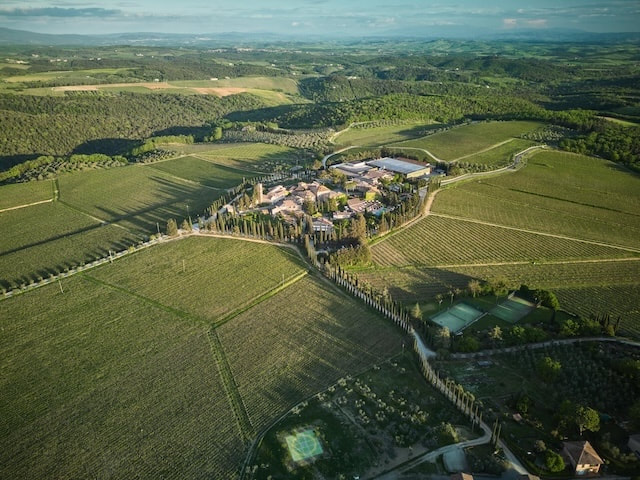

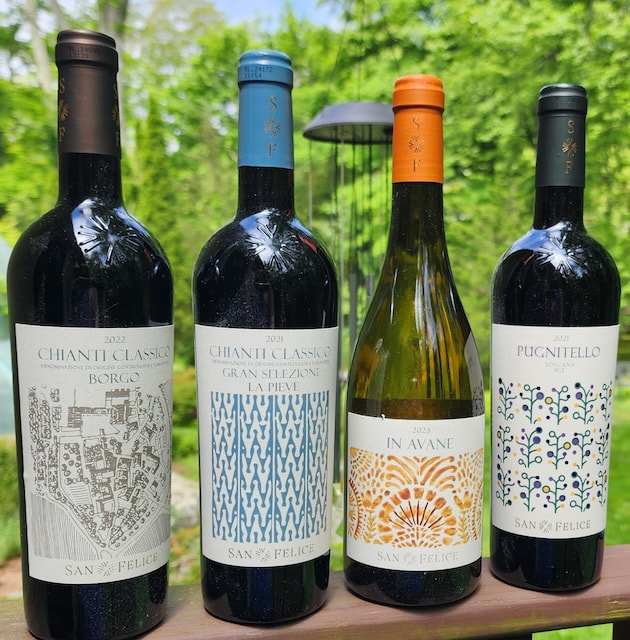
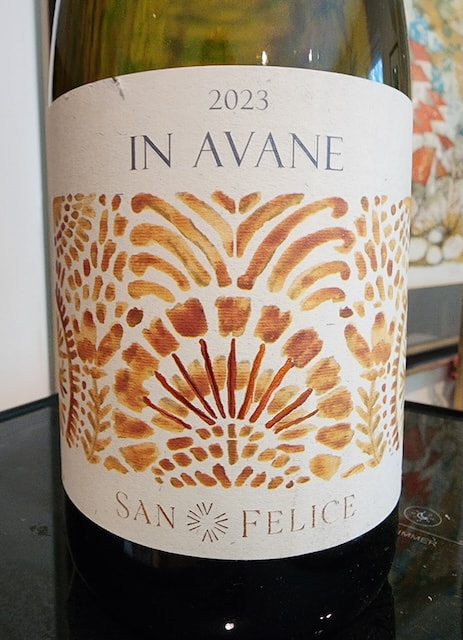
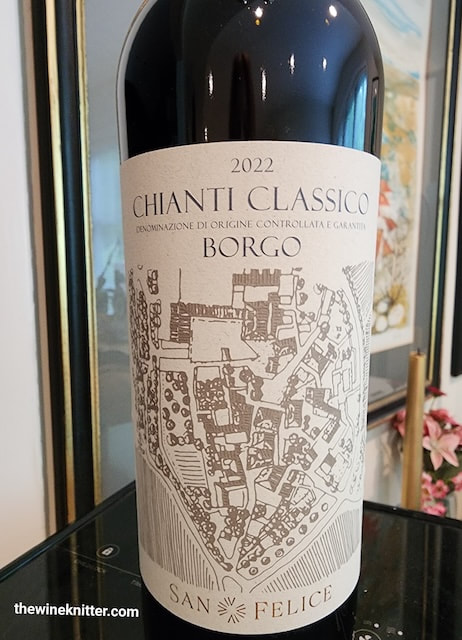
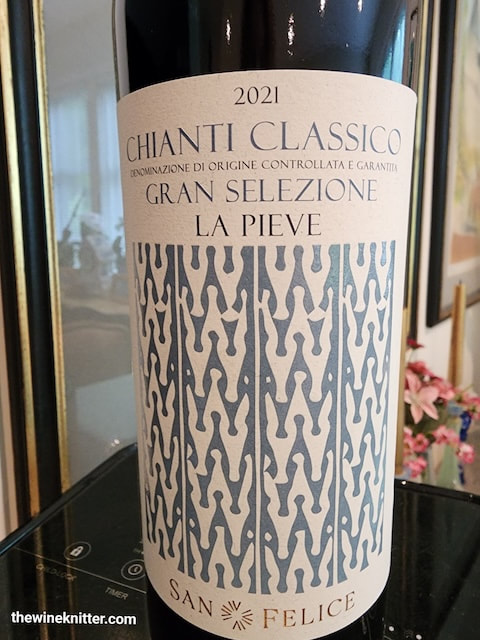
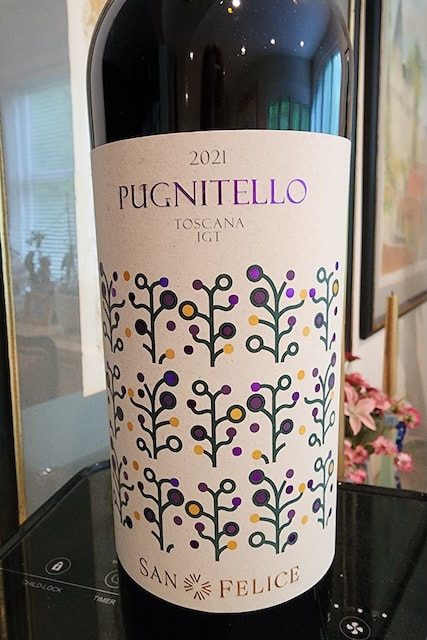
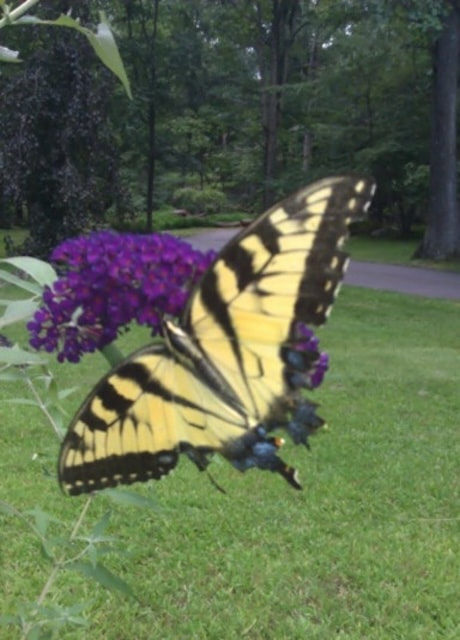
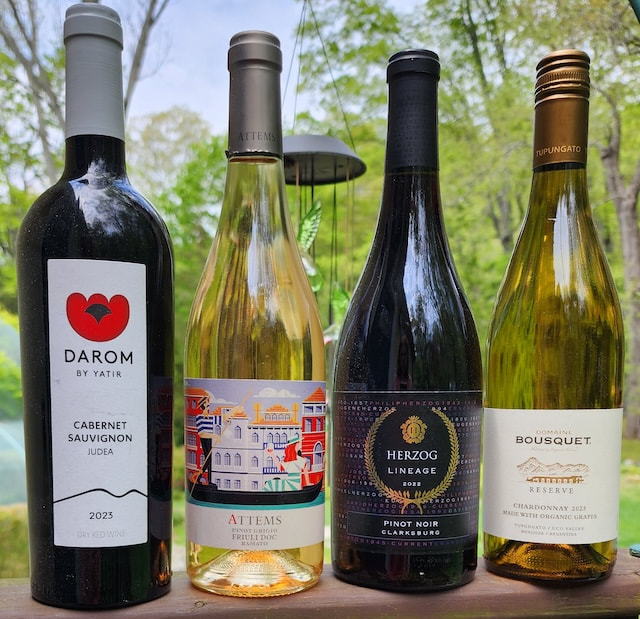
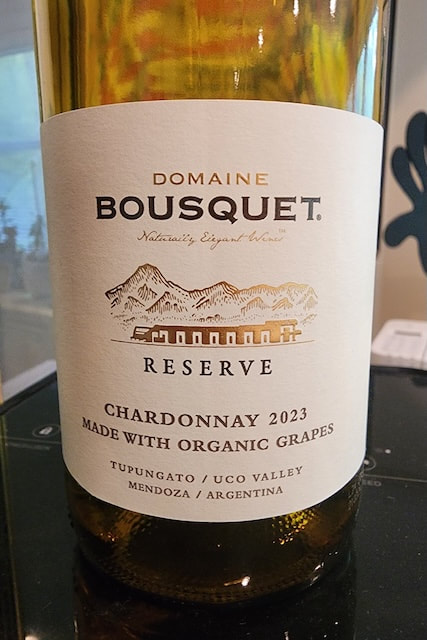
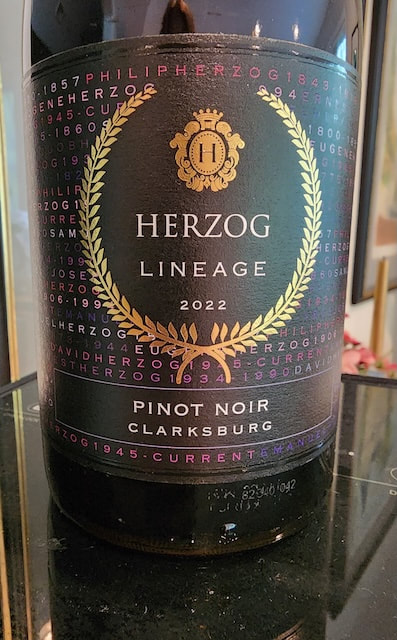
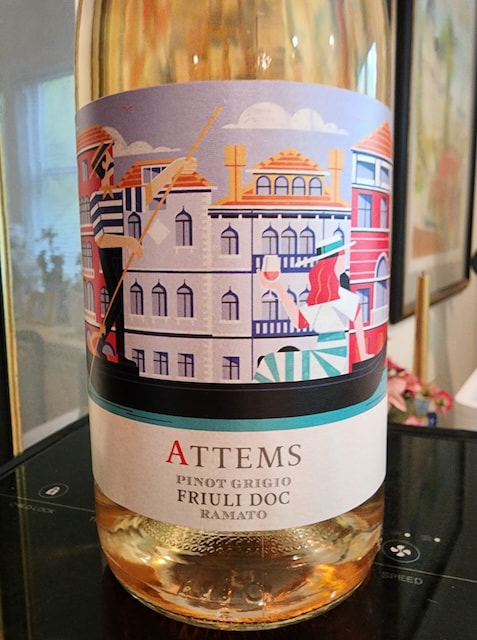
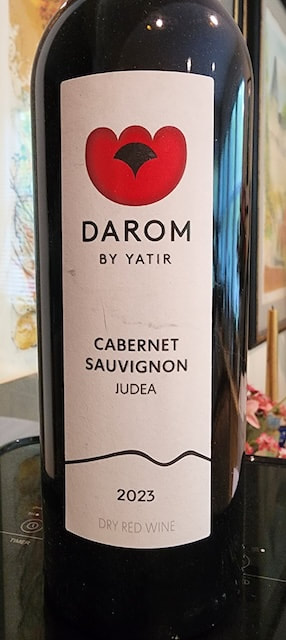
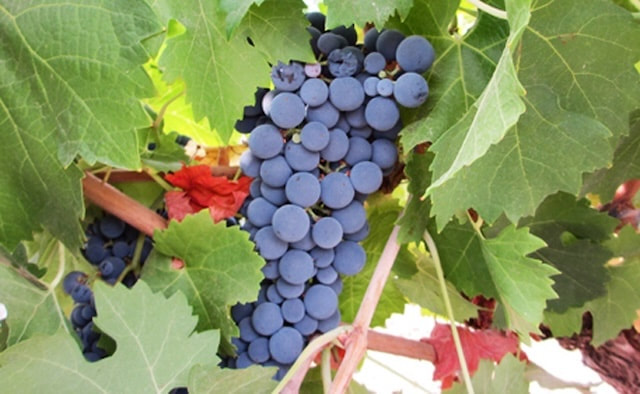
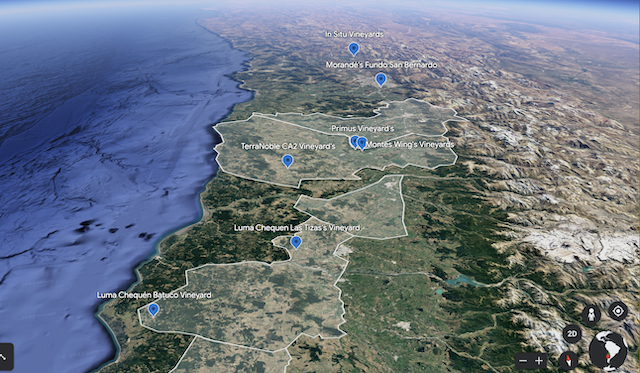
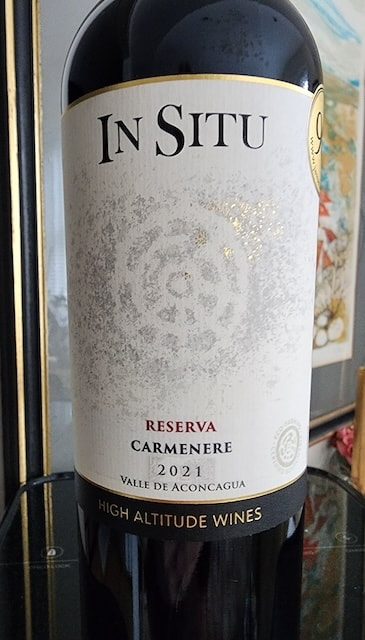
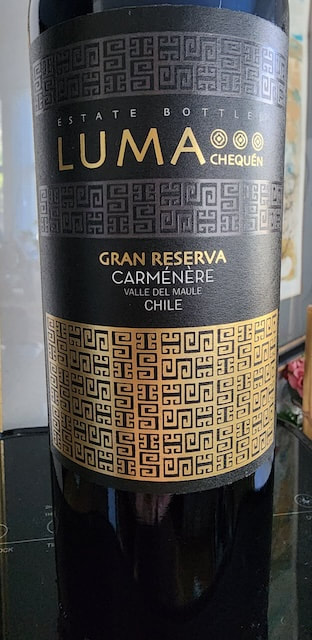
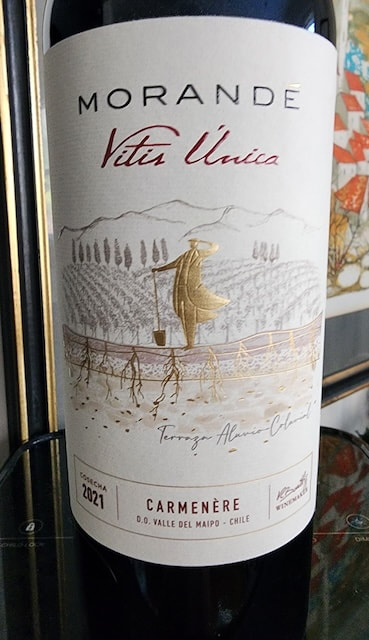
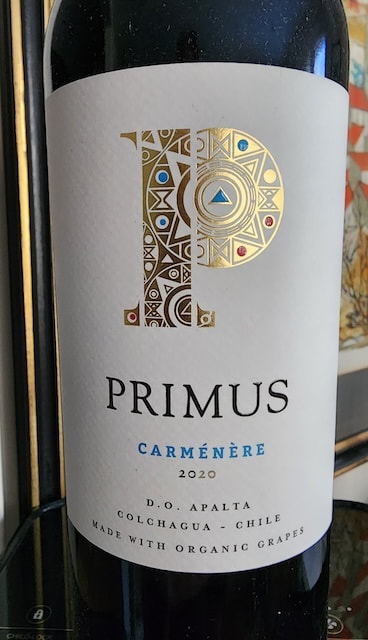
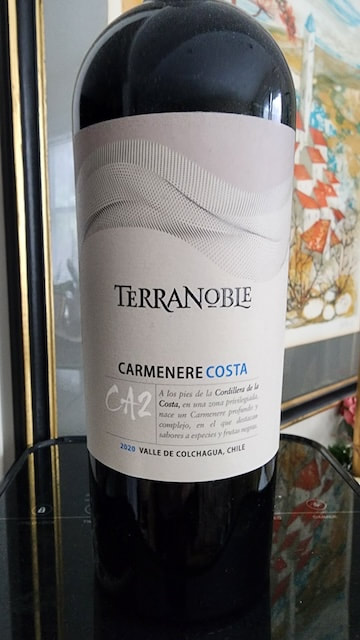
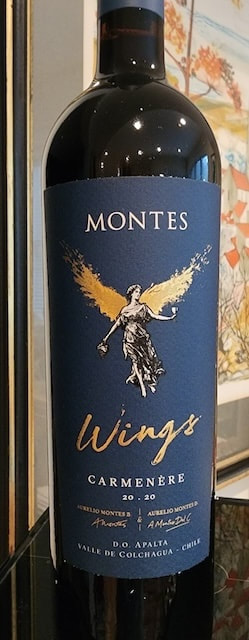
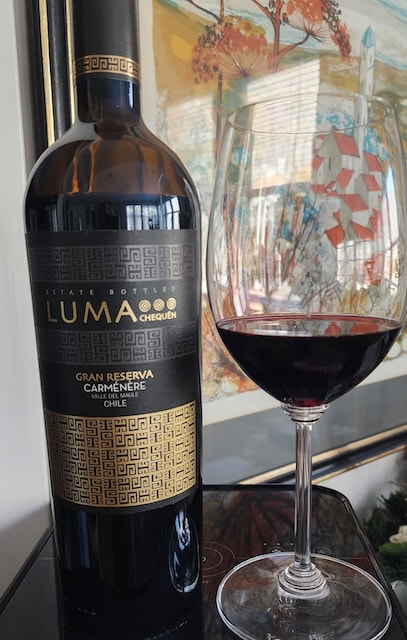






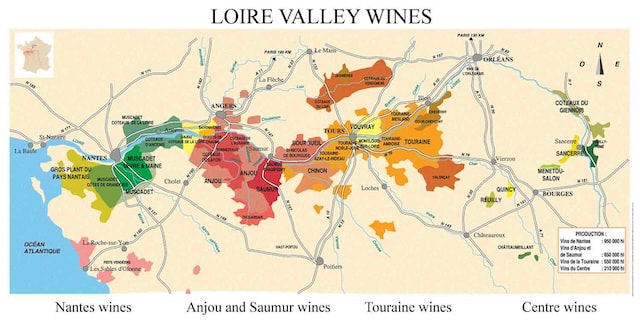
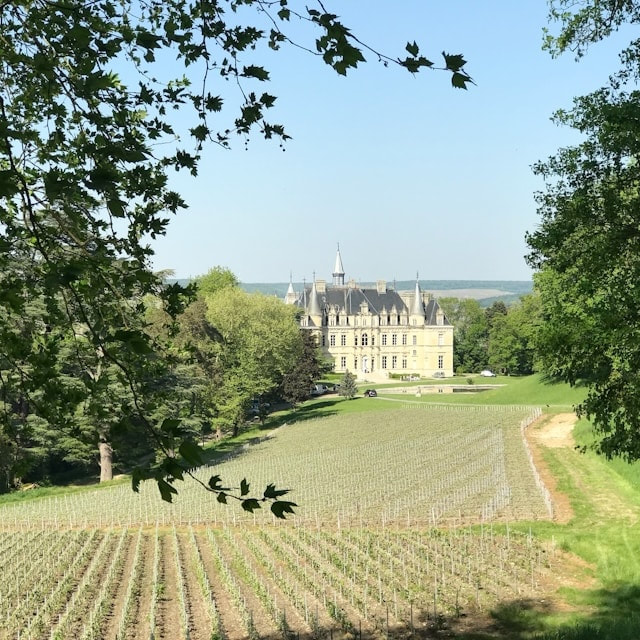
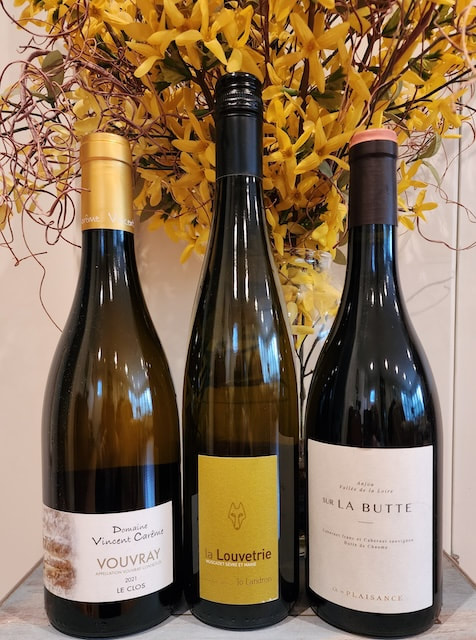
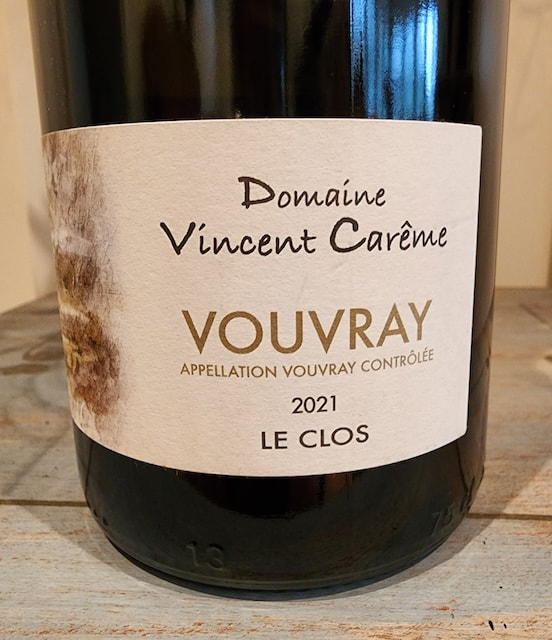
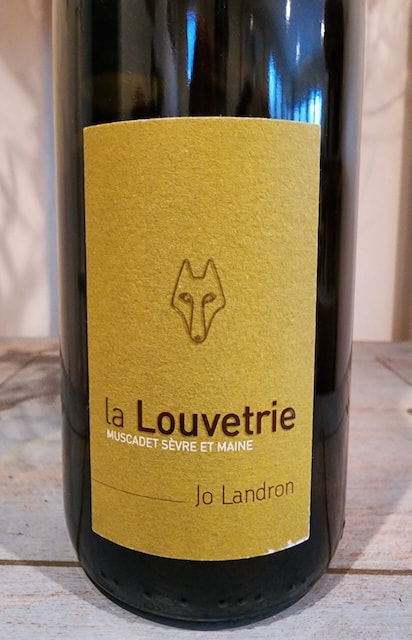
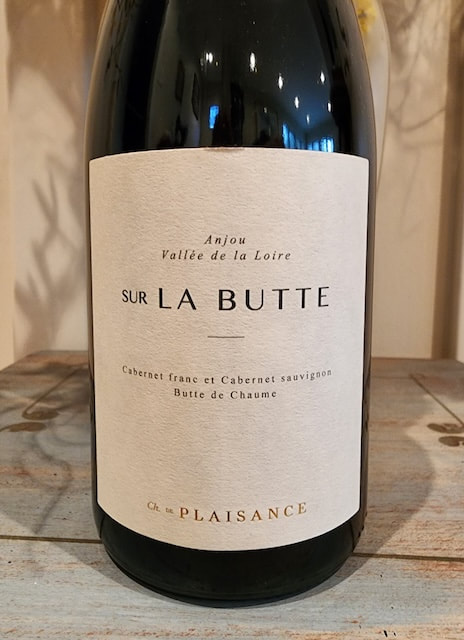
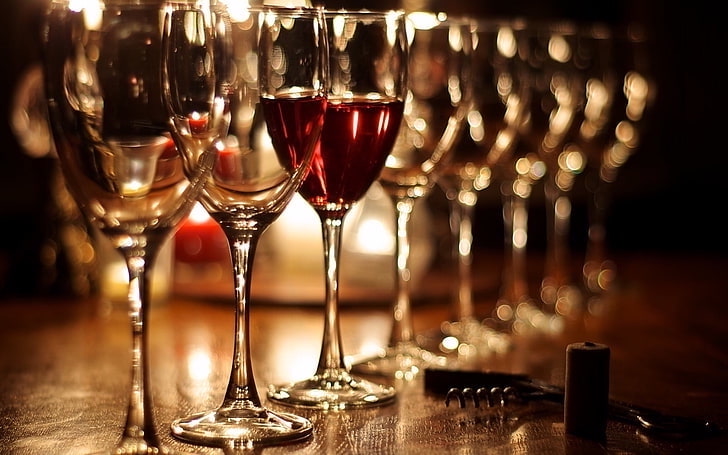
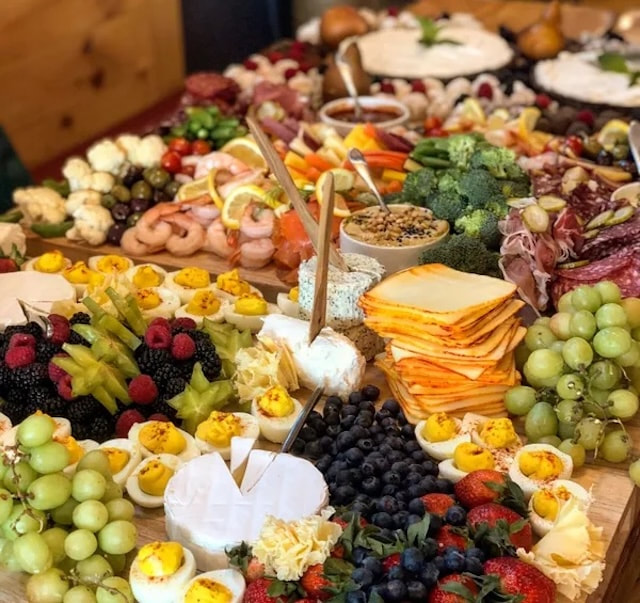
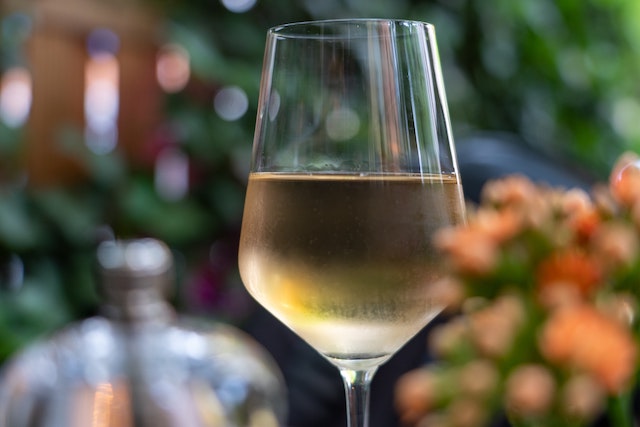
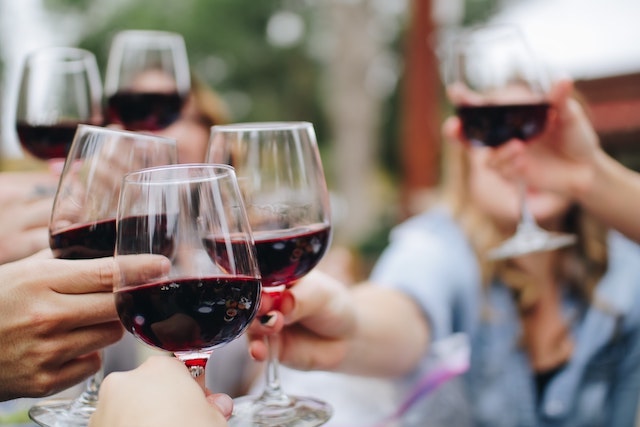

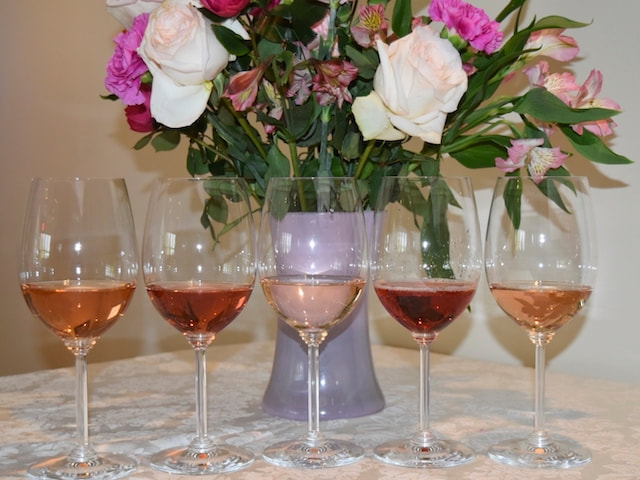







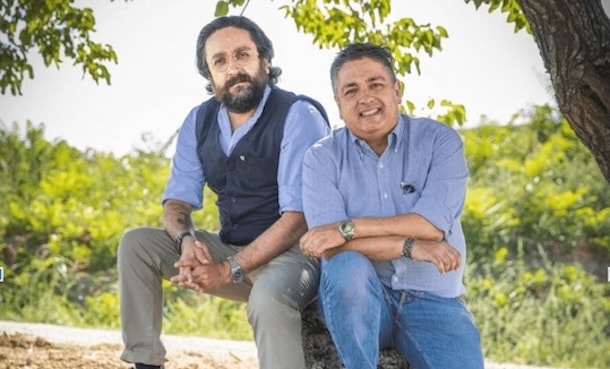
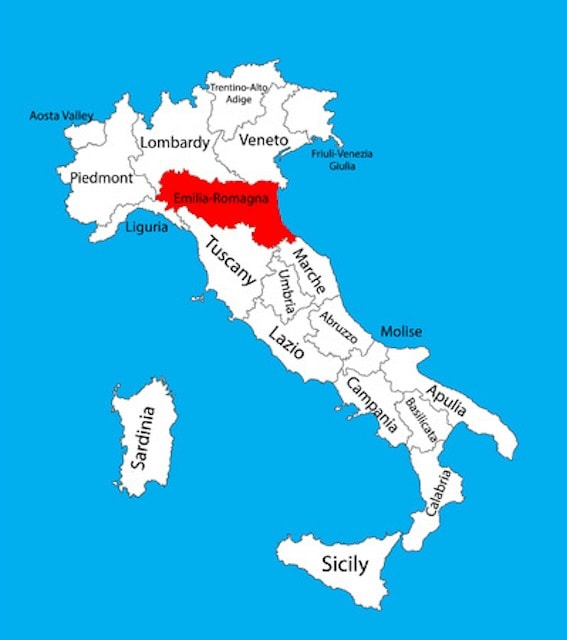
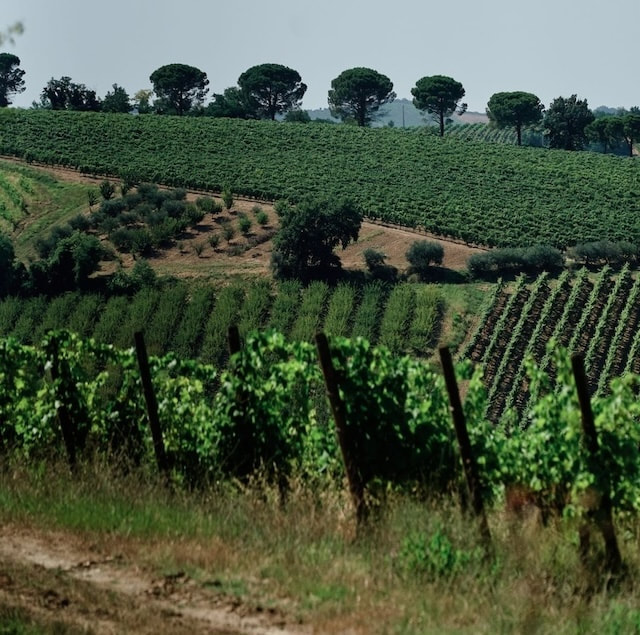
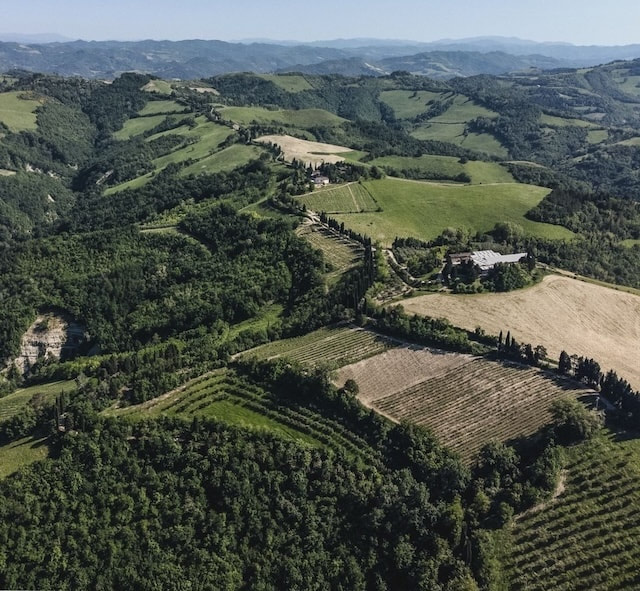
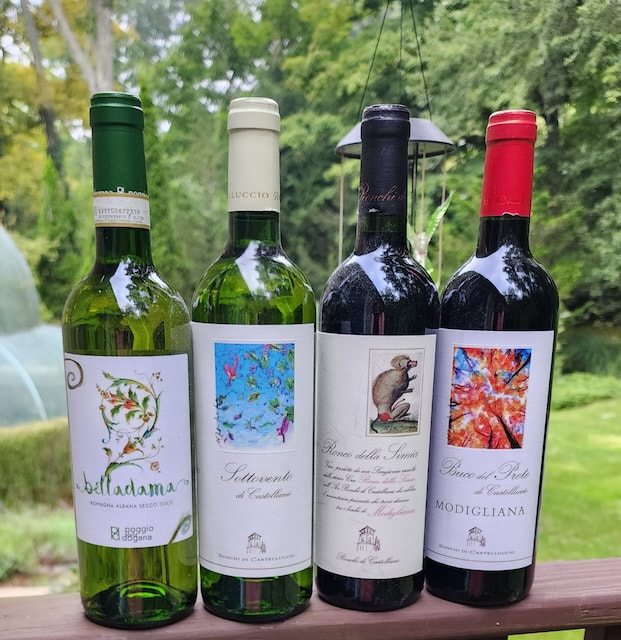
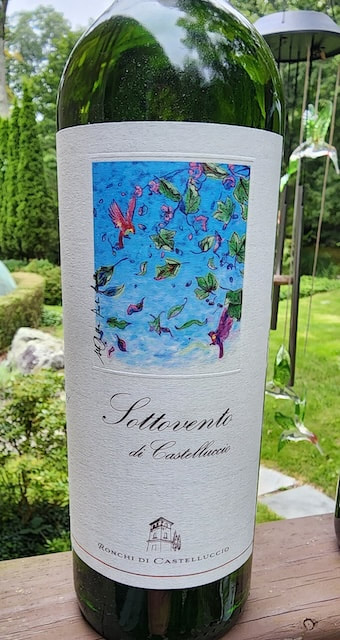
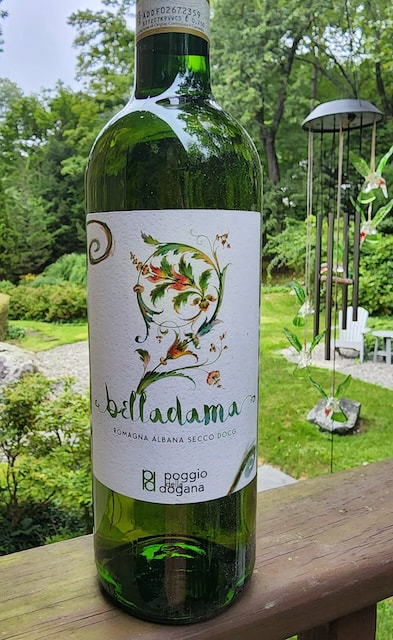
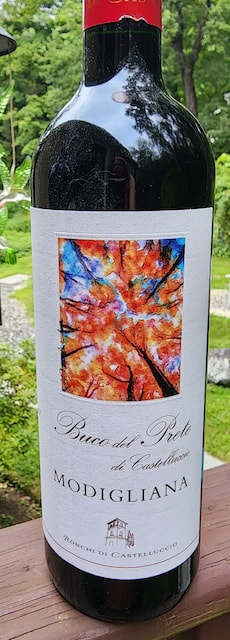
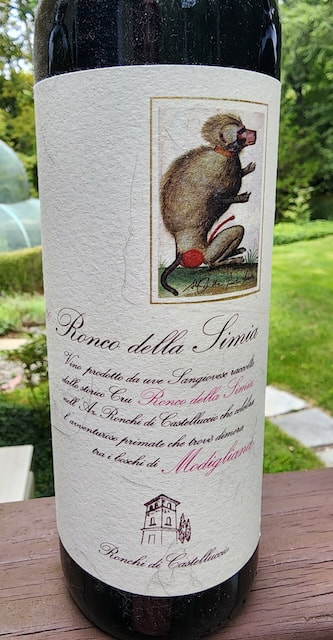
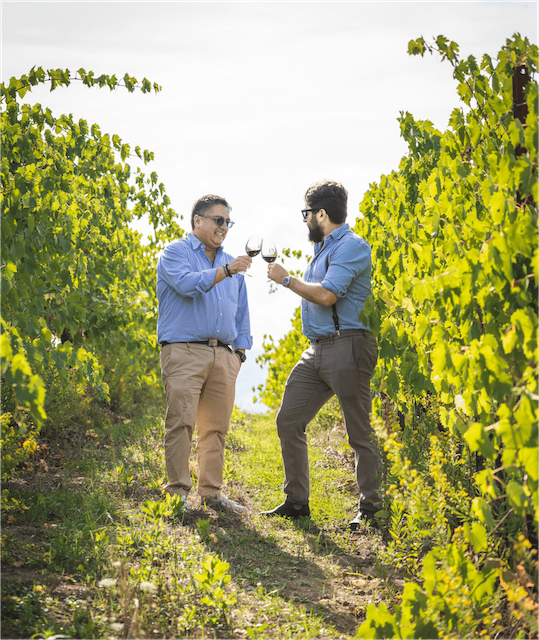

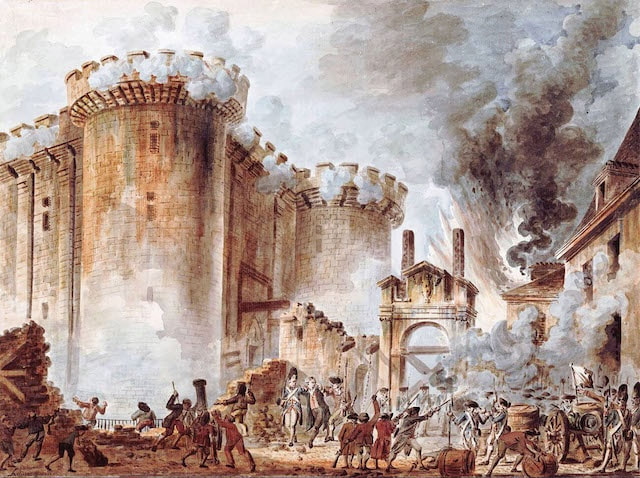
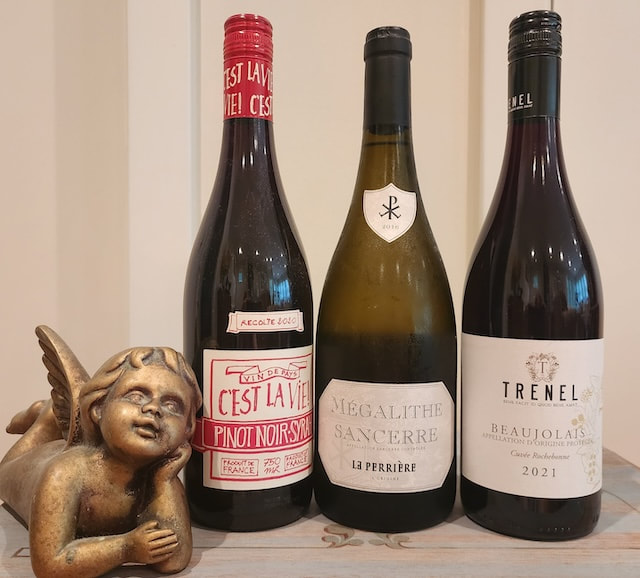
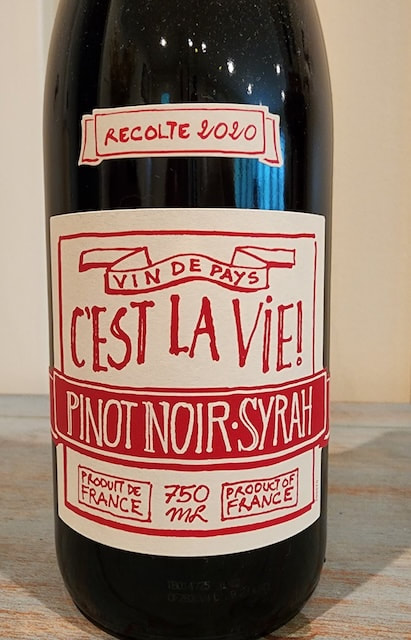
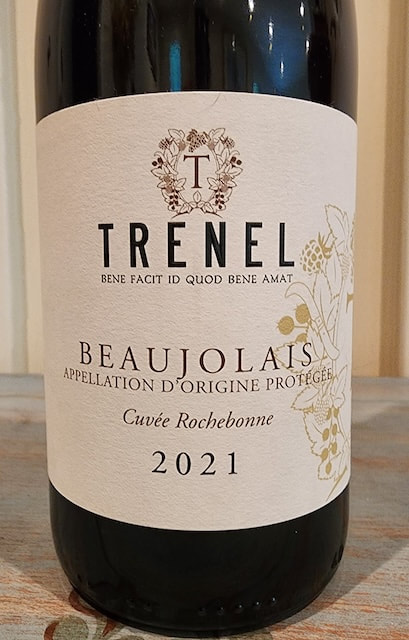
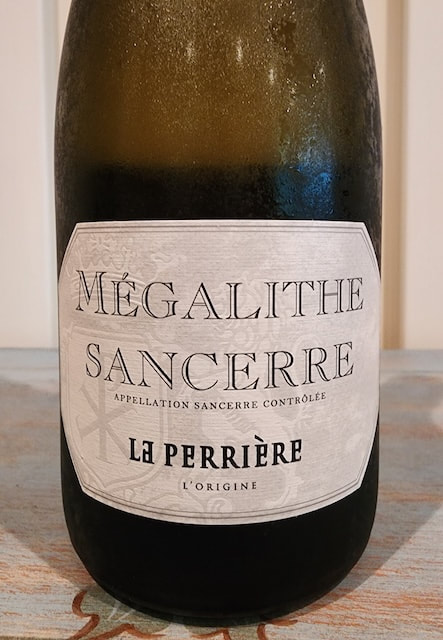

 RSS Feed
RSS Feed